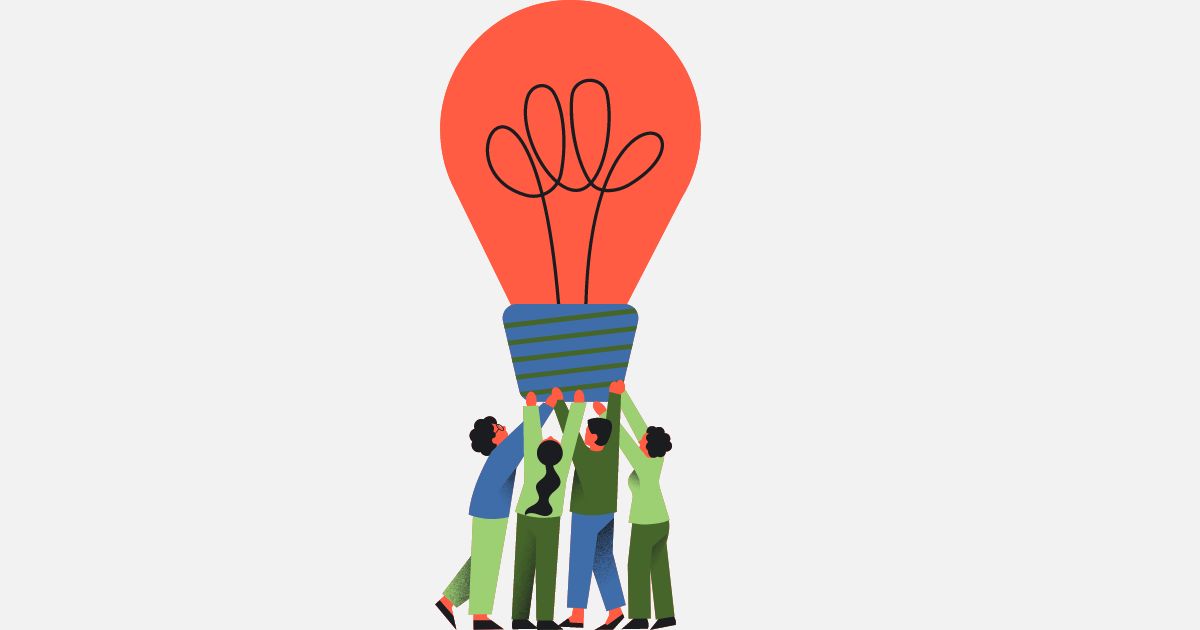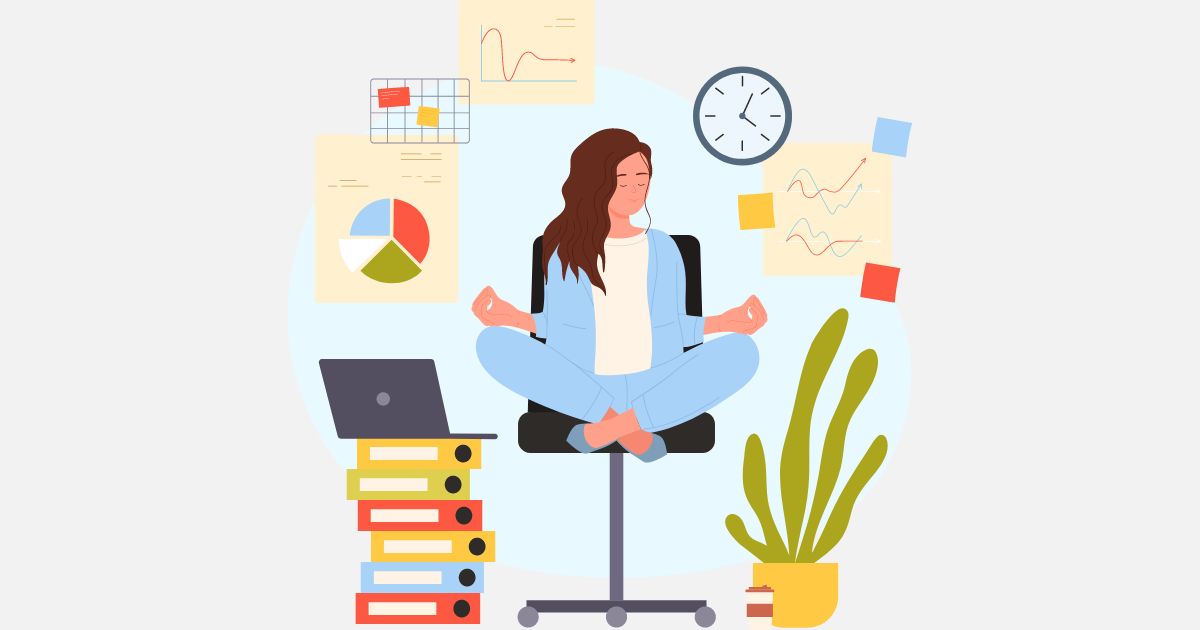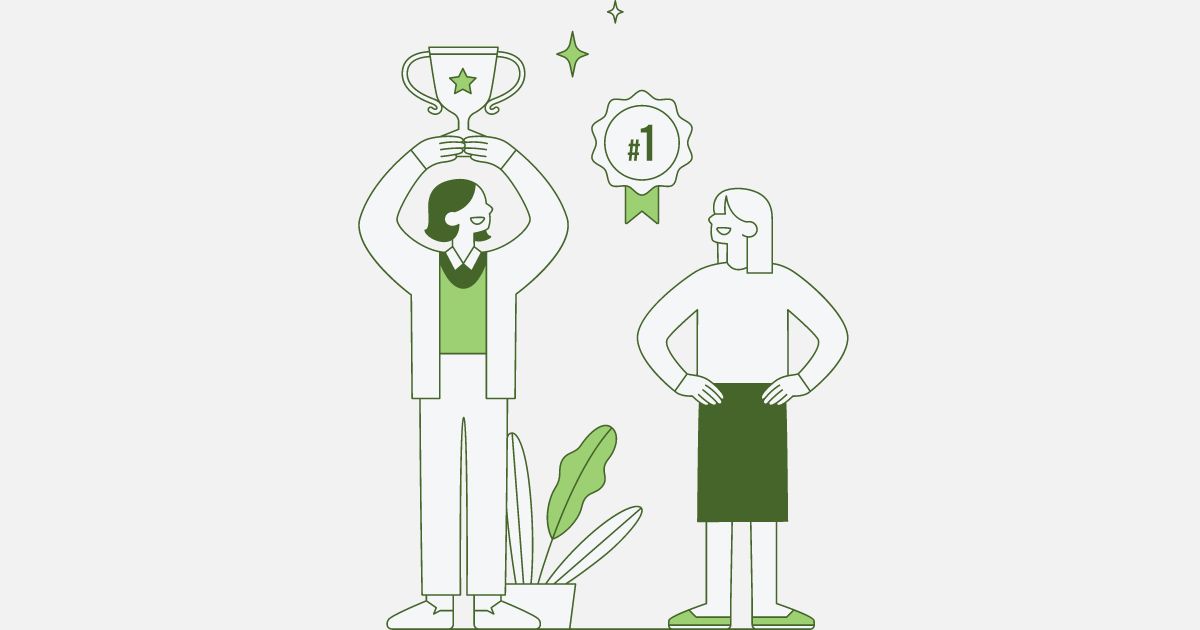Employee Contest: A Tool for Building Team Spirit


by Ummul Qura Danish
April 26, 2024
Employee contests can be a powerful tool for boosting motivation and engagement within a company. By harnessing the competitive spirit and providing incentives, these contests can inspire employees to perform at their best and achieve outstanding results. In this blog post, we will explore the benefits of employee contests and share some creative ideas to help you unlock the full potential of your workforce with Huuray. Let’s dive in and discover how employee contests can drive motivation
Jump to section
What is an employee contest?
An employee contest is a structured competition or challenge designed to engage, motivate, and incentivize employees within an organization. These contests can take various forms, such as sales competitions, innovation challenges, wellness challenges, or team-building activities. The goal of an employee contest is to encourage participation, foster teamwork, and drive performance by offering rewards, recognition, or other incentives to employees who meet specific goals or excel in certain areas. Employee contests are an effective way to boost morale, promote healthy competition, and achieve business objectives while creating a fun and engaging work environment.
What is the Impact of Employee Contests on Motivating Employees?
Employee contests have a profound impact on motivating employees by providing them with a platform to showcase their skills, talents, and dedication. These contests tap into individuals’ competitive spirits, driving them to excel and strive for success. The prospect of winning prizes or receiving recognition for their achievements serves as a powerful incentive, encouraging employees to go above and beyond in their efforts. Moreover, participating in contests fosters a sense of camaraderie and teamwork as employees collaborate towards common goals. Overall, employee contests create a dynamic and engaging environment that fuels motivation, boosts morale, and enhances overall job satisfaction among employees.
10 Types of Employee Contest
1. Performance-Based Employee Contest

- Objective: The primary objective of performance-based contests is to motivate employees to achieve specific goals and targets that are crucial for the success of the organization. These contests aim to drive performance improvement and encourage employees to excel in their roles.
- Metrics: The contests typically revolve around quantifiable performance metrics that directly contribute to the organization’s objectives. Common metrics include sales targets, productivity goals, customer satisfaction ratings, quality metrics, efficiency measures, and revenue generation targets.
- Competition Format: Employees may compete individually or in teams, depending on the nature of the contest and the organization’s structure. The competition format can vary from short-term challenges to longer-term campaigns, depending on the goals and objectives set by the organization.
- Benchmarks: Performance-based contests often establish predetermined benchmarks or targets that participants are expected to meet or exceed. These benchmarks serve as the basis for evaluating and rewarding exceptional performance.
- Recognition and Rewards: Employees who demonstrate exceptional performance and surpass the established benchmarks are typically recognized and rewarded. Rewards may include monetary incentives, bonuses, prizes, certificates, public recognition, or other forms of acknowledgment.
- Motivation and Engagement: Performance-based contests serve as powerful motivators, driving employees to put forth their best efforts and strive for excellence. They create a sense of competition and excitement, fostering a culture of high performance and continuous improvement within the organization.
- Fairness and Transparency: Performance-based contests need to be fair and transparent to ensure that all participants have an equal opportunity to succeed. Clear guidelines, objective criteria, and impartial judging processes help maintain fairness and integrity throughout the competition.
- Feedback and Development: Performance-based contests can also provide valuable feedback to participants, highlighting areas of strength and areas for improvement. This feedback can be used for personal and professional development, helping employees grow and develop their skills over time.
Overall, performance-based contests are an effective way to drive performance improvement, boost employee motivation, and align individual efforts with organizational goals and objectives. By rewarding exceptional performance, organizations can create a culture of excellence and achievement that benefits both employees and the organization as a whole.
2. Skill-Based Employee Contest

- Objective: The primary objective of skill-based contests is to highlight and recognize the diverse talents and capabilities of employees within the organization. These contests aim to encourage the development and demonstration of skills that are essential for individual and organizational success.
- Skills: Skill-based contests can focus on a wide range of skills, depending on the goals and objectives of the competition. Common areas of focus include problem-solving, critical thinking, creativity, communication, leadership, technical proficiency, project management, customer service, and more.
- Competition Format: Employees may compete individually or in teams, depending on the nature of the contest and the skills being assessed. The competition format can vary from practical demonstrations to presentations, simulations, role-plays, or other skill-based activities.
- Criteria for Evaluation: Skill-based contests typically have predefined criteria for evaluating participants’ performance and proficiency in the targeted skills. Judges or evaluators assess factors such as effectiveness, innovation, creativity, accuracy, communication, and overall mastery of the skill being demonstrated.
- Demonstration of Mastery: Participants in skill-based contests aim to demonstrate their mastery and proficiency in the targeted skills through their performance in the competition. This may involve solving complex problems, delivering compelling presentations, showcasing technical expertise, or effectively applying relevant knowledge and abilities in real-world scenarios.
- Recognition and Rewards: Employees who demonstrate exceptional skills and proficiency in the contest are typically recognized and rewarded. Rewards may include prizes, certificates, public recognition, career development opportunities, or other forms of acknowledgment that highlight their talents and contributions.
- Learning and Development: Skill-based contests provide opportunities for participants to learn, grow, and develop their skills further. Engaging in the contest allows employees to practice and refine their abilities, receive constructive feedback, and identify areas for improvement that they can focus on in their personal and professional development.
- Promotion of a Learning Culture: By emphasizing skill development and proficiency, skill-based contests promote a culture of continuous learning and improvement within the organization. They encourage employees to invest in their development, acquire new skills, and strive for excellence in their respective roles.
Overall, skill-based contests are an effective way to identify and celebrate the talents and expertise of employees, foster a culture of learning and development, and recognize individuals who excel in their chosen areas of skill and competence.
3. Creativity and Innovation Employee Contest

- Objective: The primary objective of creativity and innovation contests is to harness the collective creativity of employees to address specific challenges, solve problems, or improve existing processes within the organization. These contests aim to inspire fresh thinking, generate novel ideas, and drive innovation across various aspects of the business.
- Challenges: Employees participating in creativity and innovation contests are presented with specific challenges or problems that require innovative solutions. These challenges could range from improving efficiency in operations, enhancing customer experience, and developing new products or services, to finding creative solutions to organizational issues.
- Creativity Stimulus: Participants are encouraged to think outside the box and explore unconventional approaches to problem-solving. The contests provide a platform for employees to unleash their creativity, experiment with new ideas, and push the boundaries of conventional thinking.
- Idea Generation: Employees brainstorm, ideate, and collaborate to generate innovative ideas, solutions, or product designs that address the challenge at hand. The emphasis is on fostering a collaborative and inclusive environment where diverse perspectives and insights are valued.
- Evaluation Criteria: Creativity and innovation contests typically have predefined criteria for evaluating and selecting winning ideas or solutions. Criteria may include factors such as originality, feasibility, scalability, potential impact, alignment with organizational goals, and the degree of innovation demonstrated.
- Implementation Potential: While creativity and innovation contests focus on idea generation, consideration is also given to the feasibility and practicality of implementing the proposed solutions. Winning ideas may be further developed, refined, and eventually implemented within the organization to drive positive change.
- Recognition and Rewards: Employees whose ideas or solutions are deemed innovative and impactful are recognized and rewarded for their contributions. Rewards may include monetary incentives, recognition ceremonies, career advancement opportunities, or other forms of acknowledgment that highlight their creative achievements.
- Cultural Impact: Creativity and innovation contests play a crucial role in shaping the organizational culture by promoting a mindset of innovation, experimentation, and continuous improvement. They encourage employees to embrace change, challenge the status quo, and contribute to a culture of innovation that drives the organization forward.
Overall, creativity and innovation contests serve as powerful tools for inspiring creativity, unlocking the potential of employees, and driving meaningful innovation that propels the organization toward its strategic objectives. By fostering a culture of innovation, organizations can stay competitive, adapt to change, and thrive in dynamic and evolving market environments.

Send yourself reward
4. Team-Building Employee Contest

- Objective: The primary objective of team-building contests is to foster a sense of camaraderie, trust, and cohesion among team members. These contests aim to improve teamwork skills, promote collaboration, and create a positive and supportive team culture within the organization.
- Activities and Challenges: Team-building contests typically involve a variety of activities or challenges that require teamwork, coordination, and problem-solving skills. These activities may include outdoor team-building activities, indoor games, problem-solving challenges, scavenger hunts, role-playing scenarios, or creative projects.
- Collaboration and Communication: Participants in team-building contests must work together to complete tasks, solve problems, or achieve shared objectives. These activities encourage open communication, active listening, and effective collaboration among team members, helping to break down silos and improve interpersonal relationships.
- Bonding and Trust-Building: Team-building contests provide opportunities for team members to bond with one another and build trust through shared experiences and challenges. By overcoming obstacles and achieving common goals together, team members develop a sense of camaraderie and mutual respect, strengthening their relationships both professionally and personally.
- Leadership and Role Dynamics: Team-building contests often provide insights into leadership styles, team dynamics, and individual roles within the team. Participants may have the opportunity to take on leadership roles, delegate tasks, and work together to leverage each other’s strengths and expertise.
- Feedback and Reflection: Team-building contests may include opportunities for feedback and reflection, allowing team members to assess their performance, identify areas for improvement, and celebrate successes. Feedback sessions promote continuous learning and development, fostering a culture of self-awareness and accountability within the team.
- Positive Reinforcement: Positive reinforcement is an essential aspect of team-building contests. Recognition and rewards for teamwork, creativity, and problem-solving abilities reinforce desired behaviors and motivate team members to continue working together effectively.
- Long-Term Impact: The benefits of team-building contests extend beyond the immediate activities. Stronger team bonds, improved communication skills, and enhanced collaboration can lead to increased productivity, higher job satisfaction, and better overall performance within the team and the organization as a whole.
Overall, team-building contests play a crucial role in building strong, cohesive teams that are better equipped to tackle challenges, achieve goals, and drive success in the workplace. By investing in team-building initiatives, organizations can create a supportive and collaborative work environment that fosters employee engagement and organizational growth.
5. Health and Wellness Challenges

- Objective: The primary objective of health and wellness challenges is to improve the overall well-being of employees by encouraging them to adopt healthier lifestyles and habits. These challenges aim to raise awareness about the importance of physical and mental health and provide support for employees in achieving their wellness goals.
- Activities and Challenges: Health and wellness challenges may include a variety of activities and challenges focused on different aspects of well-being. These activities could range from step competitions, where employees track their daily steps and compete to reach certain milestones, to fitness challenges that encourage regular exercise and physical activity.
- Nutrition Programs: Nutrition programs are often included as part of health and wellness challenges to promote healthy eating habits and encourage employees to make nutritious food choices. This may involve providing educational resources, hosting healthy cooking workshops, or organizing challenges focused on meal planning and preparation.
- Mental Health Initiatives: In addition to physical health, many health and wellness challenges also address mental health and well-being. This could include initiatives such as stress management workshops, mindfulness challenges, meditation sessions, or activities aimed at promoting work-life balance and reducing burnout.
- Support and Resources: Employee wellness programs typically provide employees with access to resources and support to help them achieve their wellness goals. This may include access to fitness facilities or discounts on gym memberships, online resources such as wellness apps or platforms, and support from wellness coaches or health professionals.
- Community and Camaraderie: Participating in health and wellness challenges can foster a sense of community and camaraderie among employees. By working together towards common wellness goals, employees can support and motivate each other, share experiences, and celebrate achievements together.
- Measurement and Evaluation: Health and wellness challenges often include mechanisms for measuring and evaluating participants’ progress toward their wellness goals. This may involve tracking metrics such as steps taken, exercise minutes logged, healthy meals consumed, or improvements in mental well-being.
- Recognition and Rewards: Employees who actively participate and make progress toward their wellness goals may be recognized and rewarded for their efforts. Rewards could include incentives such as gift cards, wellness-themed prizes, extra time off, or other forms of acknowledgment for their commitment to health and well-being.
Overall, health and wellness challenges are effective tools for promoting a culture of well-being within the organization, encouraging employees to prioritize their health and adopt sustainable lifestyle habits that contribute to their overall happiness, productivity, and quality of life.
6. Sales and Revenue Competitions

- Objective: The primary objective of sales and revenue competitions is to drive business growth by increasing sales revenue and expanding the customer base. These competitions aim to boost sales team performance, enhance productivity, and ultimately contribute to the organization’s bottom line.
- Sales Targets: Sales and revenue competitions typically revolve around predefined sales targets or goals that participants are expected to achieve within a specific timeframe. These targets may include revenue targets, sales quotas, customer acquisition goals, or other key performance indicators (KPIs) relevant to the organization’s sales objectives.
- Competition Format: Sales and revenue competitions can take various formats, such as individual competitions where sales representatives compete against one another, team competitions where sales teams compete collectively, or company-wide competitions involving multiple departments or branches.
- Incentives and Rewards: To incentivize participation and motivate sales teams to perform at their best, sales and revenue competitions often offer rewards and incentives for achieving or surpassing sales targets. Rewards may include monetary bonuses, commission increases, gift cards, recognition awards, or other desirable incentives.
- Performance Tracking and Measurement: Sales and revenue competitions rely on accurate tracking and measurement of sales performance metrics to determine participants’ progress toward their sales targets. Sales data, revenue figures, customer acquisition metrics, and other relevant KPIs are monitored and evaluated to assess participants’ performance.
- Motivation and Engagement: Creating a competitive environment and offering attractive rewards, sales, and revenue competitions motivate sales teams to stay focused, driven, and committed to achieving their sales goals. The competitive spirit encourages healthy competition and fosters a sense of urgency and determination among sales representatives.
- Training and Development: Sales and revenue competitions can also serve as opportunities for training and development, as participants may receive coaching, feedback, and support to improve their sales skills and techniques. Competitions may highlight areas for improvement and provide learning experiences that contribute to professional growth and development.
- Team Collaboration: While sales competitions often focus on individual performance, they can also promote teamwork and collaboration within sales teams. Sales representatives may share strategies, insights, and best practices to help each other succeed, fostering a culture of collaboration and mutual support.
Overall, sales and revenue competitions play a vital role in driving sales performance, fostering a competitive sales culture, and aligning sales efforts with the organization’s growth objectives. By incentivizing sales teams to achieve their targets, organizations can drive revenue growth, gain a competitive edge in the market, and achieve long-term success.
7. Recognition and Appreciation Programs

- Objective: The primary objective of recognition and appreciation programs is to reinforce positive behaviors, boost morale, and enhance employee motivation and job satisfaction. These programs aim to create a culture of appreciation and recognition within the organization, where employees feel valued and respected for their efforts and contributions.
- Types of Recognition: Employee recognition programs can take various forms, including verbal praise, written commendations, public acknowledgments, awards ceremonies, employee of the month/year awards, spot bonuses, gift cards, extra time off, or other tangible rewards.
- Criteria for Recognition: Employees may be recognized and appreciated for a wide range of accomplishments, including exceptional performance, outstanding results, innovative ideas, exemplary teamwork, leadership qualities, customer satisfaction, years of service, or other significant achievements that align with the organization’s values and objectives.
- Regular and Timely Recognition: Effective recognition and appreciation programs are characterized by regular and timely acknowledgment of employees’ contributions. Prompt recognition reinforces desired behaviors and ensures that employees feel valued and appreciated in real time for their efforts.
- Inclusivity and Fairness: Recognition and appreciation programs should be inclusive and fair, ensuring that all employees have equal opportunities to be recognized and rewarded for their contributions, regardless of their role, level, or tenure within the organization.
- Customization and Personalization: Tailoring recognition and appreciation efforts to individual preferences and preferences can enhance their impact and effectiveness. Personalized gestures that resonate with employees on a personal level demonstrate genuine appreciation and reinforce a sense of belonging and connection to the organization.
- Cultural Alignment: Recognition and appreciation programs should be aligned with the organization’s culture, values, and objectives. They should reflect and reinforce the desired behaviors and attitudes that contribute to the organization’s success and promote a positive work environment.
- Impact on Employee Engagement and Retention: Recognition and appreciation programs play a crucial role in improving employee engagement, retention, and overall satisfaction. Employees who feel recognized and appreciated are more likely to be motivated, committed, and loyal to the organization, leading to higher levels of productivity and performance.
- Feedback and Communication: Effective recognition and appreciation programs involve ongoing feedback and communication between managers and employees. Managers should regularly communicate expectations, provide feedback on performance, and recognize achievements in a timely and meaningful manner.
Overall, recognition and appreciation programs are essential components of a positive and supportive workplace culture. By acknowledging and rewarding employees’ contributions and achievements, organizations can cultivate a motivated and engaged workforce that drives success and achieves its goals.
Let’s have a chat
8. Community Engagement Initiatives

- Objective: The primary objective of community engagement initiatives is to empower employees to make a positive impact in their communities and contribute to meaningful causes outside of the workplace. These initiatives aim to foster a sense of social responsibility, empathy, and civic engagement among employees, while also strengthening the organization’s relationship with the community.
- Types of Activities: Community engagement initiatives may encompass a wide range of activities, including volunteer work at local nonprofits, community service projects such as park clean-ups or food drives, fundraising events for charitable organizations, mentoring programs for at-risk youth, or participation in community events and festivals.
- Benefits for Employees: Participating in community engagement initiatives offers numerous benefits for employees, including personal fulfillment, a sense of purpose, and the opportunity to develop new skills, expand their networks, and build relationships with colleagues outside of the workplace. Engaging in meaningful community work can also help reduce stress, increase happiness, and improve overall well-being.
- Benefits for the Community: Community engagement initiatives have a positive impact on the communities they serve by addressing social needs, supporting local organizations, and fostering a sense of unity and collaboration among community members. Employees’ contributions help create positive change and make a meaningful difference in the lives of others.
- Alignment with Organizational Values: Community engagement initiatives should align with the organization’s values, mission, and goals. By supporting community initiatives that reflect the organization’s values, employees feel a stronger connection to their workplace and are more motivated to participate in community engagement activities.
- Volunteerism and Corporate Social Responsibility (CSR): Community engagement initiatives are often a key component of a company’s CSR strategy. By actively participating in volunteer work and community service projects, organizations demonstrate their commitment to social responsibility and contribute to building stronger, more resilient communities.
- Team-Building and Employee Engagement: Community engagement initiatives provide opportunities for team-building and employee engagement outside of the traditional work environment. Collaborating on community projects fosters teamwork, communication, and camaraderie among employees, strengthening their bonds and sense of belonging within the organization.
- Recognition and Appreciation: Organizations should recognize and appreciate employees who participate in community engagement initiatives, whether through formal recognition programs, public acknowledgment, or other forms of appreciation. Recognizing employees’ contributions reinforces the importance of community engagement and encourages continued participation.
Overall, community engagement initiatives play a vital role in promoting social responsibility, fostering employee engagement, and strengthening the bond between organizations and the communities they serve. By encouraging employees to give back to their communities, organizations can make a positive impact and create a culture of caring and compassion that extends beyond the workplace.
9. Diversity and Inclusion Campaigns

- Objective: The primary objective of diversity and inclusion campaigns is to foster a workplace culture that celebrates diversity, embraces inclusion, and promotes equity and fairness for all employees. These campaigns aim to raise awareness about the importance of diversity and inclusion, challenge biases and stereotypes, and create opportunities for dialogue and learning.
- Activities and Initiatives: Diversity and inclusion activities may include a variety of activities and initiatives designed to promote awareness, education, and action around DEI topics. These activities could range from cultural awareness challenges, where employees learn about different cultures, traditions, and perspectives, to bias recognition exercises that help individuals identify and address unconscious biases.
- Training and Workshops: Many diversity and inclusion campaigns incorporate training sessions, workshops, or seminars focused on topics such as unconscious bias, inclusive leadership, cultural competence, and mitigating microaggressions. These educational opportunities provide employees with the knowledge and skills needed to foster a more inclusive workplace environment.
- Employee Resource Groups (ERGs): ERGs are often integral to diversity and inclusion campaigns, providing a platform for employees with shared identities, backgrounds, or interests to connect, support one another, and advocate for diversity and inclusion within the organization. ERGs may organize events, networking opportunities, and educational programs as part of the campaign.
- Policy Review and Implementation: Diversity and inclusion campaigns may also involve a review of existing policies and practices to ensure they promote diversity, equity, and inclusion. Organizations may identify areas for improvement and implement new policies or initiatives to address gaps and promote greater inclusivity in hiring, promotion, and workplace practices.
- Leadership Commitment and Accountability: Successful diversity and inclusion campaigns require strong commitment and leadership from senior management. Leaders play a crucial role in setting the tone, prioritizing DEI initiatives, and holding themselves and others accountable for promoting diversity and inclusion throughout the organization.
- Measurement and Evaluation: Organizations may establish metrics and benchmarks to measure the effectiveness of diversity and inclusion initiatives and track progress over time. Regular evaluation and feedback help organizations identify areas of strength and opportunities for improvement, ensuring that DEI efforts remain a priority.
- Cultural Transformation: Ultimately, diversity and inclusion campaigns aim to drive cultural transformation within the organization, shifting attitudes, behaviors, and norms to create a more inclusive and equitable workplace where all employees feel valued, respected, and empowered to succeed.
Overall, diversity and inclusion campaigns are essential for building a diverse and inclusive workplace culture that reflects the values and principles of equity and fairness. By fostering an environment where everyone feels welcome and included, organizations can unlock the full potential of their workforce and drive innovation, creativity, and organizational success.
10. Learning and Development Employee Contest

- Objective: The primary objective of learning and development competitions is to promote a culture of continuous learning and skill enhancement within the organization. These competitions aim to motivate employees to invest in their personal and professional growth, acquire new skills, and stay abreast of industry trends and best practices.
- Types of Competitions: Learning and development competitions may take various forms, including:
1. Learning challenges: Employees compete to complete specific learning modules, courses, or training programs within a set timeframe.
2. Quizzes and assessments: Competitions may involve quizzes or assessments that test employees’ knowledge of specific topics or skills.
3. Certification programs: Employees compete to obtain professional certifications or credentials relevant to their roles or career aspirations.
- Topics and Skills: Competitions may cover a wide range of topics and skills relevant to employees’ roles, career goals, or organizational needs. These could include technical skills, soft skills, industry-specific knowledge, leadership development, communication skills, project management, and more.
- Format and Structure: Learning and development competitions may be structured as individual challenges, team competitions, or company-wide initiatives. The format could involve online platforms, gamified learning experiences, workshops, seminars, or peer-to-peer learning activities.
- Incentives and Rewards: To incentivize participation and motivate employees, learning and development competitions often offer rewards and recognition for successful completion or achievement. Rewards may include certificates, badges, digital credentials, prizes, career advancement opportunities, or other forms of recognition.
- Peer Learning and Collaboration: Competitions provide opportunities for peer learning and collaboration, as employees may share resources, insights, and best practices. Collaborative learning fosters a culture of knowledge sharing and teamwork, where employees support each other’s growth and development.
- Feedback and Evaluation: Competitions may include mechanisms for feedback and evaluation to assess participants’ progress and performance. Feedback from trainers, mentors, or peers can help participants identify areas for improvement and tailor their learning journey accordingly.
- Continuous Improvement: Learning and development competitions promote a mindset of continuous improvement, encouraging employees to seek out new learning opportunities, set ambitious goals, and strive for excellence in their professional development endeavors.
Overall, learning and development competitions are effective tools for promoting a culture of lifelong learning and skill development within the organization. By investing in employee development and fostering a learning-centric environment, organizations can empower their workforce to adapt to change, innovate, and drive success in an ever-evolving business landscape.
Implementation Tips for Employee Contests
Implementing employee contests effectively requires careful planning, clear communication, and strategic execution. Here are some implementation tips for various types of employee contests:
- Define Clear Objectives: Clearly define the objectives and goals of the contest. Determine what you aim to achieve, whether it’s improving employee engagement, fostering teamwork, promoting learning and development, or giving back to the community.
- Tailor Contests to Audience: Understand your audience and tailor the contests to their interests, preferences, and needs. Consider factors such as job roles, demographics, and organizational culture when designing contests to ensure relevance and participation.
- Communicate Effectively: Communicate the purpose, rules, and expectations of the contest clearly and transparently to all participants. Use multiple communication channels such as email, intranet, posters, and team meetings to ensure widespread awareness and participation.
- Provide Resources and Support: Offer participants the necessary resources, tools, and support to succeed in the contest. This may include access to training materials, learning resources, mentorship, or logistical support for community engagement activities.
- Set Realistic Targets and Timelines: Set realistic targets, deadlines, and timelines for the contest to keep participants motivated and on track. Break down larger goals into smaller milestones to maintain momentum and track progress effectively.
- Incentivize Participation: Provide incentives, rewards, or recognition for participation and achievement in the contest. Rewards can be both tangible (e.g., prizes, gift cards) and intangible (e.g., public recognition, career development opportunities) to appeal to a diverse range of participants.
- Promote Collaboration and Teamwork: Encourage collaboration and teamwork among participants, especially in contests that involve group activities or projects. Foster a supportive and inclusive environment where employees feel empowered to share ideas, support each other, and work towards common goals.
- Monitor Progress and Provide Feedback: Regularly monitor participants’ progress and provide constructive feedback to keep them engaged and motivated. Offer guidance, support, and encouragement to help participants overcome challenges and stay on track toward their goals.
- Celebrate Achievements: Celebrate the achievements and successes of participants throughout the contest duration and after the contest. Recognize individual and team accomplishments publicly, and highlight the positive impact of their contributions on the organization.
- Evaluate and Iterate: After the contest concludes, conduct a thorough evaluation to assess its effectiveness and gather feedback from participants. Identify lessons learned, areas for improvement, and best practices to inform future contests and initiatives.
- Sustain Engagement: Maintain momentum and sustain engagement beyond the contest period by incorporating elements of the contest into ongoing initiatives, fostering a culture of continuous learning, recognition, and collaboration.
By following these implementation tips, organizations can maximize the effectiveness of staff competition, drive participation, and achieve desired outcomes that contribute to employee satisfaction, organizational success, and overall employee well-being.
Conclusion
In conclusion, workplace contests are powerful tools for fostering employee engagement, promoting collaboration, and driving organizational success. By offering enticing contest prizes and incentives, organizations can motivate their workforce to excel, innovate, and achieve collective goals. These contests not only recognize individual and team achievements but also cultivate a culture of continuous improvement and personal growth. As employees participate in these contests, they not only enhance their skills and knowledge but also contribute to a vibrant and dynamic workplace environment. Ultimately, well-executed workplace contests serve as catalysts for boosting morale, strengthening team cohesion, and inspiring a shared sense of accomplishment among employees.



Let’s have a chat
Frequently asked questions
Recognizing and celebrating the achievements of contest participants is key to motivating and engaging employees. Publicly acknowledge individual and team accomplishments, both during the contest and after it concludes. Highlight the positive impact of their contributions on the organization and consider offering tangible and intangible rewards as a form of recognition.
Remember, the success of employee contests depends on thoughtful planning, effective communication, and providing the necessary resources and support for participants. By implementing contests that align with your organization’s goals and values, you can create a positive and rewarding experience for your employee
Clear and transparent communication is crucial for the success of employee contests. Use multiple communication channels such as email, intranet, posters, and team meetings to inform employees about the purpose, rules, and expectations of the contest. Regularly update participants on progress, deadlines, and any changes or additional information related to the contest.
To ensure fairness and inclusivity in employee contests, it’s important to establish clear rules and criteria for participation and evaluation. All employees should have equal opportunities to participate, regardless of their role, level, or tenure. Additionally, consider tailoring contests to accommodate different skill levels and preferences to foster inclusivity.
Incentives for employee contests can vary depending on the organization and the goals of the contest. Common incentives include monetary rewards, gift cards, recognition awards, career development opportunities, extra time off, or other desirable incentives that align with the interests and preferences of employees.
Employee contests can have several benefits for your organization. They can improve employee engagement, foster teamwork and collaboration, promote learning and development, and even contribute to building a positive organizational culture. By offering incentives and rewards, contests can also motivate employees to perform at their best and achieve collective goals.